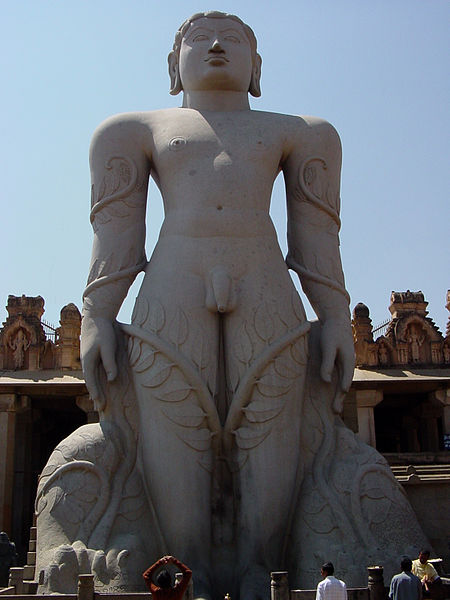
Gommateshvara
Shravanabelgola, Karnataka
(continued from preceding page)
According to Jain belief, the saints and saviors of earlier times were physical giants, but their height diminished in later ages. A Jain believer would, therefore, understand the colossal size of this statue in a literal sense, and feel that he was gazing on a life-size image of the son of Adinath.
In spite of its strikingly odd proportions - which express a canon of Jain art - the statue impresses with its physical purity, a metaphor for spiritual purity, as if the strange-looking body truly belongs to one who is no longer entirely of this earth. Yet the saint is literally rooted to the ground by the vines, being carried over two mounds of earth on either side, which cover him. The association with vegetation and the earth, i.e. fertility and generation, is reinforced by images of snakes and termite hills on the base of the statue (next page); furthermore, it must be said, the overall form of the sculpture, which rises upright from between two veined mounds, is unavoidably phallic.
These fertility motifs are, of course, contradicted by the spirit of self-denial inherent in Gommateshvara's story, and indeed by the nudity of the statue itself, which in the context of Jainism represents the renunciation of all things. Such complexities of contradiction could, perhaps, only arise in an additive culture like India's, whose culture embraces seemingly opposite qualities in order to incorporate them into a greater unity.


